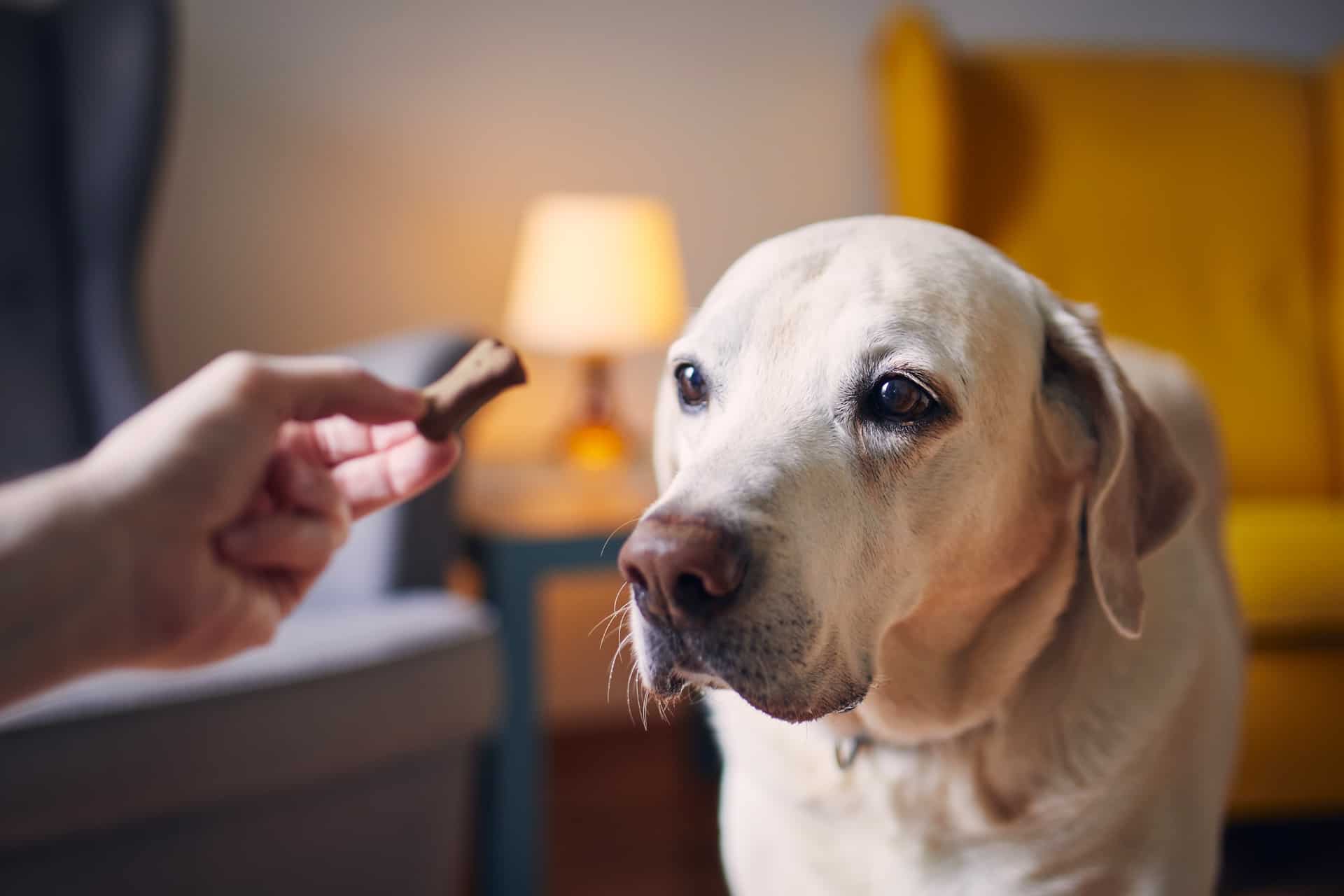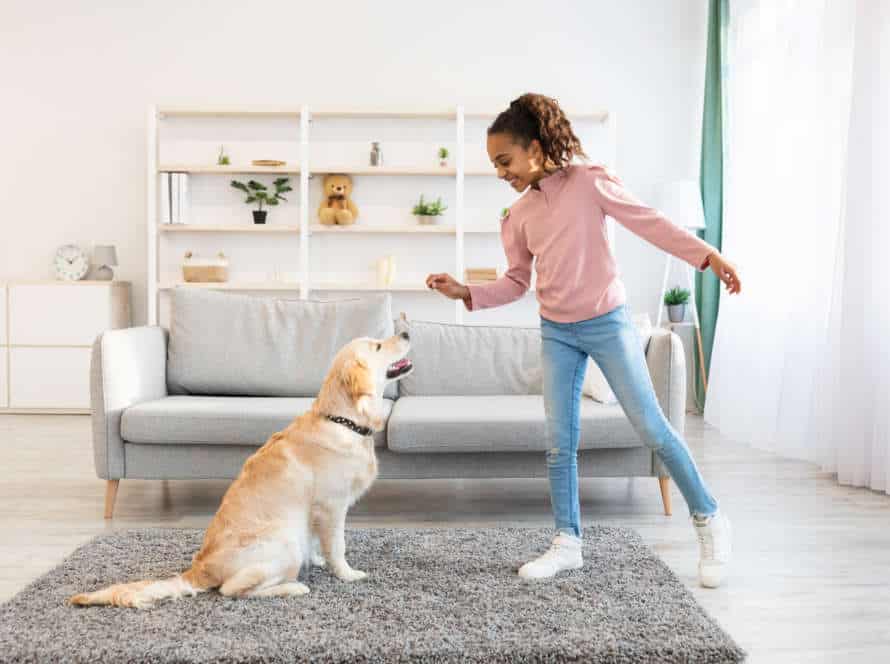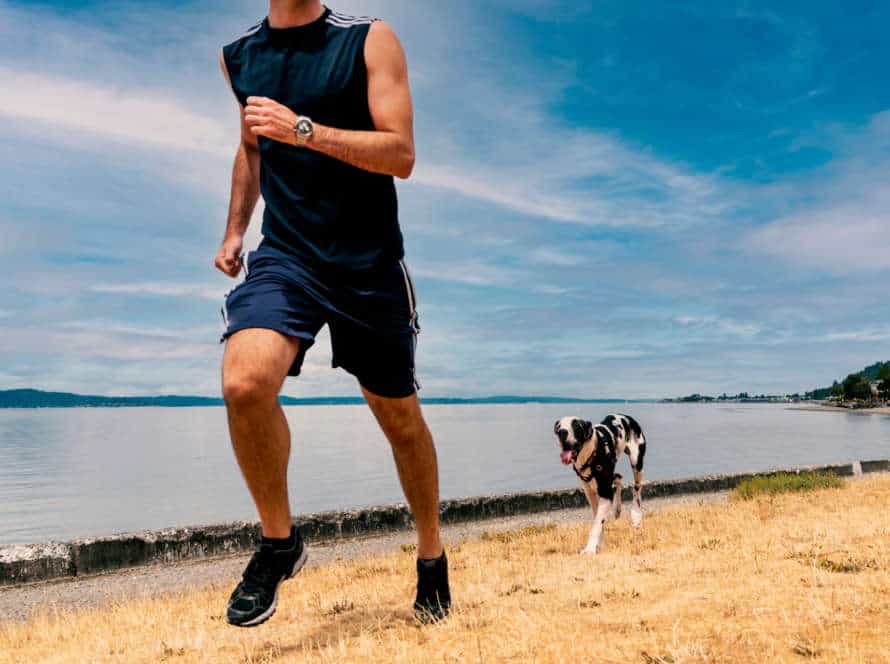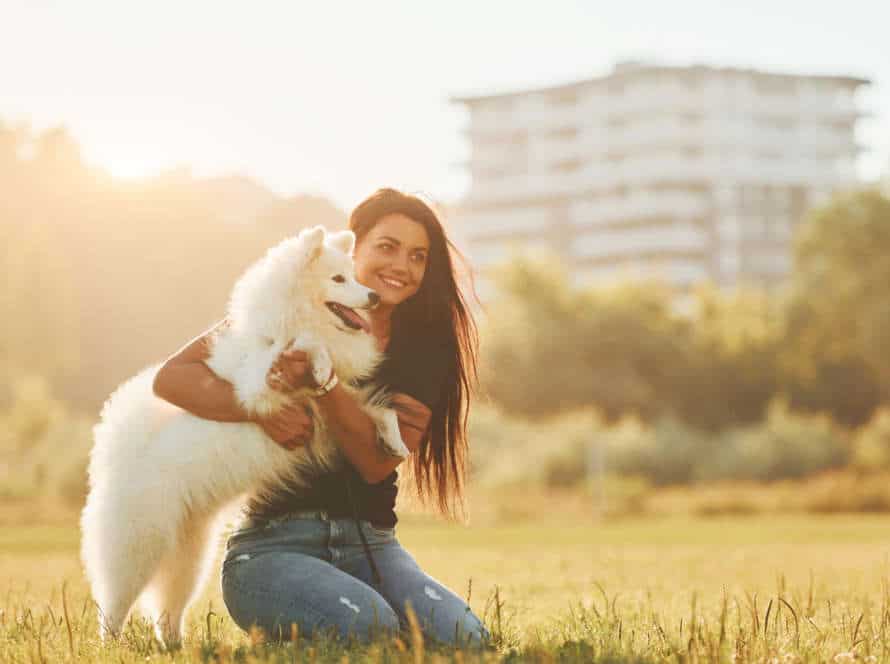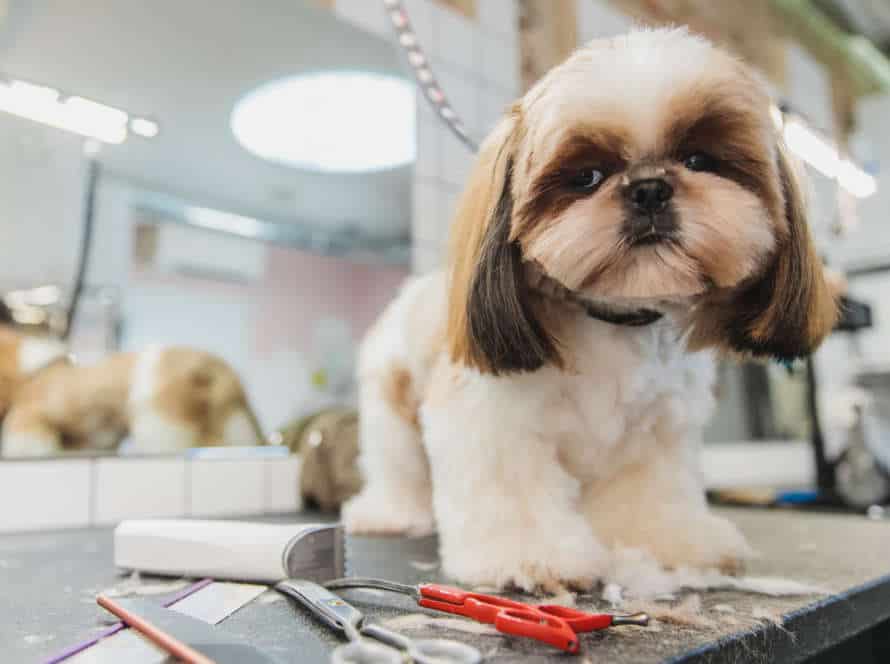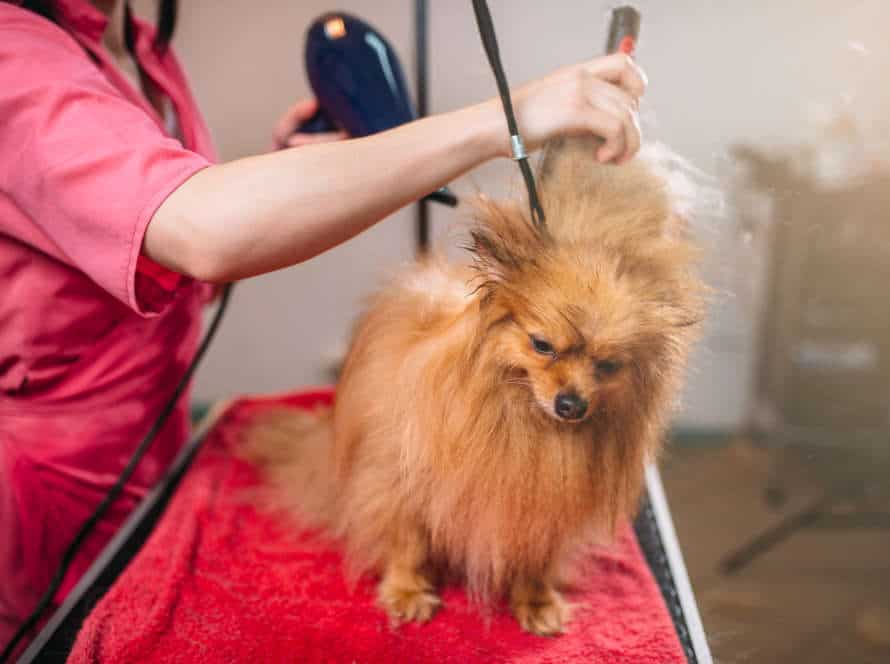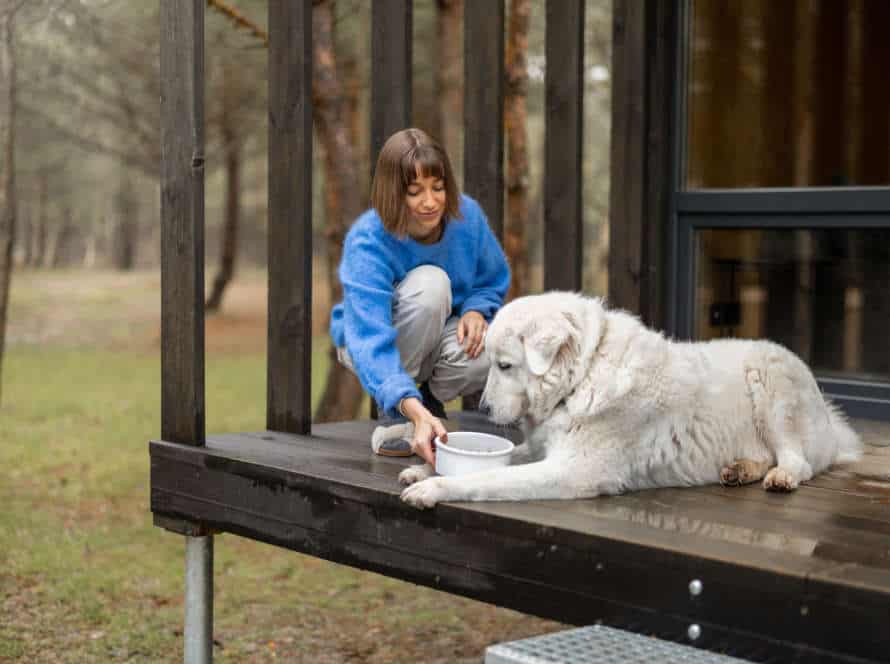Positive Reinforcement: Boosting Your Dog’s Confidence and Happiness
Positive reinforcement training is the way to go for making your dog feel confident and content. Reward good behavior with treats, compliments, or playtime. This will help you create a strong bond, decrease stress and worry, and promote a positive atmosphere for both of you.
Here’s how to make your pup’s life better with positive reinforcement:
- Begin with small goals, such as teaching your pup to sit or come when called.
- Provide treats, praise, and playtime when your dog does something right.
- Be patient and consistent with your training. Don’t use negative reinforcement.
- Practice in different places and situations to help your pup adapt and gain more confidence.
Positive reinforcement builds trust and respect between you and your pooch. It will help create a lasting, healthy relationship.
The Importance of Positive Reinforcement
Positive reinforcement is a helpful way to train pups! It causes the behaviour you want and creates trust and a strong bond between the canine and its owner. It also helps build self-confidence and lessen fear in difficult times. Therefore, positive reinforcement is essential for creating a content and healthy relationship with your pooch.
We’ll now look at why positive reinforcement is important for your dog.
Understanding the basics of positive reinforcement training
Positive reinforcement training is a kind, effective way to train dogs. It rewards good behavior rather than punishing bad.
Understanding the basics:
- Reward good behavior with treats, praise, and love.
- Time it right. Give reward right after the desired behavior.
- Be consistent. Never reward bad behavior.
Why is positive reinforcement important? It boosts your dog’s confidence, joy, and encourages learning.
Using positive reinforcement training creates a closer bond and a positive learning environment.
Pro tip: Keep favorite treats handy to reward good behavior and make sure your pup is motivated and positively reinforced.
The benefits of using positive reinforcement on your dog
Positive reinforcement is an effective way to train your pup – and it has many advantages compared to punishment-style methods. It rewards good behaviour, prompting your dog to repeat it – improving their learning and comprehension.
Benefits of using positive reinforcement with your dog include:
- Enhancing their confidence and cheerfulness – leading to better behaviour.
- Strengthening your relationship with your pup by increasing trust and love.
- Creating a secure learning atmosphere where your pup is more likely to learn and connect with you.
- Promoting desirable social behaviour and discouraging bad behaviours with little to no fear, dread or aggression.
Using positive reinforcement requires constancy, patience and empathy. Always reward your pup with treats, compliments or playtime for good behaviour and avoid punishment or scolding for bad behaviour.
Pro tip: Ask a professional dog trainer on the best way to use positive reinforcement in your pup’s training.
How positive reinforcement can improve your dog’s behavior
Positive reinforcement is a powerful way to change your pup’s behavior. Instead of punishing bad behavior, this approach focuses on rewarding good behavior. Rewards like treats, praise, toys, and games can help your pup understand what it should do.
This method builds a strong connection between you and your pet. Plus, it helps your dog think and solve problems, resulting in more confidence and joy. So, when your pup does something good, make sure to give it a reward!
Using Treats for Positive Reinforcement
Positive reinforcement is great for training your pup. Use treats as a reward for good behavior. Treats will help encourage the desired action. Plus, it creates a strong bond between you and your pup. Let’s learn more about how treats can be used for positive reinforcement!
Choosing the right treat for your dog
Choosing the right treat for your dog is important! Here are some tips:
- Think about their age, size and diet.
- Choose treats with high-quality ingredients, no artificial colors, flavors or preservatives.
- Pick something motivating and enjoyable, like soft, chewy or crunchy textures, and flavors they like.
- Use treats in moderation – too many can lead to weight gain and other health problems.
- Remember, treats are only for positive reinforcement, not for substituting proper training and attention.
Pro Tip: Not sure what to choose? Consult with your vet or a pro dog trainer for recommendations that suit your pup’s needs and likes.
How to deliver the treat effectively
Treats: A great way to positively reinforce your pup! But remember, delivering them effectively is just as important. If done wrong, it could lead to confusion or even reinforce bad habits. Here’s how to make treats truly count:
- Be Timeliness: Give the treat right after the desired behavior. That way your pup can easily link the two together.
- Be Consistent: Deliver the treat the same way each time. Your pup will then know what to expect and which behaviour is being rewarded.
- Be Intentional: Use a clear and positive voice and give the treat in an enthusiastic manner. Don’t forget to shower them with praise too!
- Be Moderate: Go easy on the treats. Give them in proportion to the behaviour being rewarded. This ensures your pup won’t become overweight or overly reliant on treats.
Pro Tip: Don’t overuse treats to reward good behaviour. Instead, use verbal praise, physical attention or playtime with a favourite toy. This is how you show your pup that they’re doing a great job!
Avoiding common mistakes when using treats for positive reinforcement
Reward your pup with treats for positive reinforcement. But, be mindful of common mistakes.
- Don’t overfeed – adjust meals and treats to avoid weight gain.
- Be clear about what you’re rewarding. Otherwise, your pup may get confused or frustrated.
- Don’t use treats too often. This can create an unhealthy dependency.
- Take note of your pup’s preferences. Some dogs don’t like certain treats, which can make training less effective.
To make sure you get the most out of this technique, watch your pup’s food intake, be precise with rewards, switch up rewards and pay attention to your pup’s likes and dislikes.
Toys and Play as Positive Reinforcement
Toys, treats, and playtime are awesome methods of giving positive reinforcement to your pooch. Fetch, tug-of-war, and hide-and-seek are good for mental and physical stimulation. Chewing toys and treat balls can keep your pup entertained for hours. Games that reward good behaviour can also help your dog build confidence and make them feel appreciated.
Here, let’s look into the advantages of toys and play as positive reinforcement for your pup.
Choosing the right toys for your dog’s personality
Choosing the perfect toys for your pup’s personality? It can be a game-changer! Positive reinforcement play can boost their confidence and happiness. Consider these types:
- Aggressive chewers? Look for durable rubber or nylon toys that won’t break apart.
- High-energy pooches? Interactive toys like puzzles and fetch toys can provide physical and mental stimulation.
- Anxious or shy dogs? Soft, plush toys can soothe their nerves.
- Independent or stubborn dogs? Try toys that dispense treats or have a strong scent.
Encourage play with positive reinforcement. Praise and reward your pup with treats when they interact with the toys. This will strengthen the bond between you and your dog. Plus, rotate their toys regularly to keep them engaged and entertained.
Incorporating playtime into your training routine
Injecting playtime into your pup’s teaching plan can be a great way to reward good behavior, boost their self-assurance, and create joy in your furry pal. Here are some tips to keep in mind:
- Choose toys that are secure and suitable for your pooch’s age, size, and playing style.
- Use them as rewards for proper behavior, such as sitting on command or coming when called.
- Set aside dedicated playtime each day to bond with your pup and give them activity and stimulation.
- Vary your playtime schedule to avoid dullness and make sure your dog is mentally and physically stimulated.
- Always watch your pup during playtime and store toys in a safe place when not in use.
Pro tip: Playtime can also help to build the connection between you and your pup, making them more open to future training.
Tips for using toys and play as positive reinforcement
Positive reinforcement with toys and play is a great way to make your pup happier and more confident. Here are some tips to help you make the most of it:
- Use your pooch’s favorite toys – like a tennis ball, stuffed toy, or tug-of-war rope.
- Make playtime interactive – fetch, tug-of-war, etc., so your pup connects fun with you.
- Reward good behavior with the toy – this reinforces the positive.
- Set boundaries – so playtime doesn’t become a distraction or create bad habits.
Pro Tip: Change up your pup’s toys every few days to keep them interested!
Praise and Affection as Positive Reinforcement
Positive reinforcement is great for making your pup happy and confident. Praise and love them when they do something right! This will help them learn faster and stick to the good habits. Use praise and affection as a way to reinforce positivity. There you have it!
The power of verbal praise on your dog’s mood
The power of verbal praise for your pup is often underrated. Praising and cuddling your dog has a strong effect on his mood and behaviour. It reinforces the actions that evoke the praise.
Verbal praise can come in many forms. From a simple “good boy” to more complex, situation-specific phrases like “great job staying with me on our stroll!“
Intermittently praising your pup has lots of advantages such as enhanced obedience, improved self-esteem, and better behaviour. Positive reinforcement with verbal praise and love should be combined with their most loved treats or toys to make the most out of its effect on the doggo’s mood.
Pro tip: Make sure you find the perfect balance between verbal praise and tangible rewards. Too little or too much verbal praise can have contrasting effects on your pup’s behaviour.
Incorporating physical affection as positive reinforcement
Using physical affection as positive reinforcement is an excellent way to make your pup’s self-esteem and joy skyrocket. Praise and love are the two most common forms of positive reinforcement, as they help increase good behavior.
Here are some tips on how to do this with your pup:
- Give your pup a reward or tummy rub when they act nicely, like sitting or rolling over.
- Be cheerful while praising them, it reinforces better behavior.
- Give hugs, cuddles, and gentle pats to create a stronger bond and make them feel appreciated.
Keep in mind, dogs respond well to positive reinforcement. Incorporating physical affection in order to reinforce good behavior will create a strong connection between you and your pup, and enhance their happiness and confidence.
How to show affection correctly to maximize its positive impact
Showing affection to your loved ones, be it a pet or a human, can make a huge difference in their lives. But it’s also important to show it right, to make the most of it.
Praise and affection can be used as positive reinforcement to guide your pup’s behavior. Make sure you give love at the right time, such as after they’ve done what you asked them to. Using the same verbal cues and actions can help your pup understand what you want from them. You can also add treats and toys as part of the positive reinforcement.
But be careful not to overdo it. Give them the space they need to feel comfortable. Respect their boundaries and take note of how they like to be loved.
Pro Tip: Positive reinforcement must be done consistently for it to really work.
Advanced Techniques for Positive Reinforcement
Positive reinforcement is a great way to train your pup! It can boost their confidence, joy, and behaviour. Reward your pet when they do what you want them to. Advanced techniques of positive reinforcement go beyond regular treats. These can help build a strong, trusting relationship between you and your furry friend. Let’s take a closer look at these methods.
Clicker training as a form of positive reinforcement
Clicker training is a popular way to show positive reinforcement with dog training. It uses a clicker and treats to reward good behavior in dogs.
When using clicker training, the clicker is associated with a treat. The trainer clicks the clicker when the dog does something good, like sitting or staying.
This teaches the dog that the click means a treat and good behavior. Clicker training is great for teaching new things, boosting confidence, and calming down fearful dogs.
With practice, the dog will respond to the clicker even without the treat.
Training your dog to perform tricks using positive reinforcement
Train your pup with positive reinforcement! It’s a great way to make them obedient and confident, while making them happy too. Here are a few advanced techniques:
- Shaping- Break the trick into small steps and reward them each time they complete one. You’ll be able to build up the behavior so they can do the trick!
- Free-Shaping- Let them choose the right behavior and reward them for every step they take closer to doing the trick.
- Back-Chaining- Start with the last step and work back. This way your pup will know the reward comes after the last step and will help motivate them to learn the whole trick.
Positive reinforcement is safe, humane and effective. Plus, it builds trust between you and your pup!
Using positive reinforcement to build your dog’s confidence and independence.
Positive reinforcement can be a cool way to help your pooch gain confidence! Here are some expert tips to boost their self-belief and joy:
- Train your pup with positive reinforcement such as clicker training, to sharpen their mental agility.
- Set up obstacle courses or hide treats for them to find. Give them a treat when they do it successfully.
- Make sure to always praise them for their strengths, and simply ignore any mistakes.
- Give them the chance to solve problems on their own. Only lend a hand if they need it.
By using positive reinforcement correctly, you two can create a strong bond based on trust, respect, and a shared enthusiasm for knowledge.
Frequently Asked Questions
1. What is positive reinforcement, and how can it benefit my dog?
Positive reinforcement is a training method that rewards good behavior with treats, praise, playtime, or other desirable things. This approach can help build your dog’s confidence and self-esteem while encouraging them to repeat good behavior.
2. What types of rewards can I use for positive reinforcement?
Effective rewards for positive reinforcement include small treats, verbal praise, petting or playtime, and even a favorite toy. The key is to find what your dog loves and use it consistently to reinforce good behavior.
3. Can positive reinforcement be used for all types of dogs?
Yes, positive reinforcement can be used for all breeds of dogs, regardless of age, size or temperament. Whether you are training a puppy or an older dog, using positive reinforcement can be an effective way to teach them new behaviors and strengthen good habits.
4. How can I start incorporating positive reinforcement into my dog’s training?
Start by identifying the behaviors you want to reinforce and the rewards your dog loves most. Then, when your dog exhibits the desired behavior, immediately reward them with their favorite treat or praise. Repeat this process consistently to reinforce the behavior.
5. Are there any potential drawbacks to using positive reinforcement?
One potential drawback of positive reinforcement is that some dogs may become too dependent on treats or rewards, and may not behave well when they are not present. To avoid this, slowly phase out the treats and praise as your dog becomes more reliable.
6. Can positive reinforcement be used to address behavioral issues, such as anxiety or aggression?
Positive reinforcement may not be the only solution for addressing more complex behavioral issues, but it can be an effective part of a larger behavior modification plan. It’s always best to discuss any major concerns with a veterinarian or professional dog trainer who can offer personalized guidance and support.

